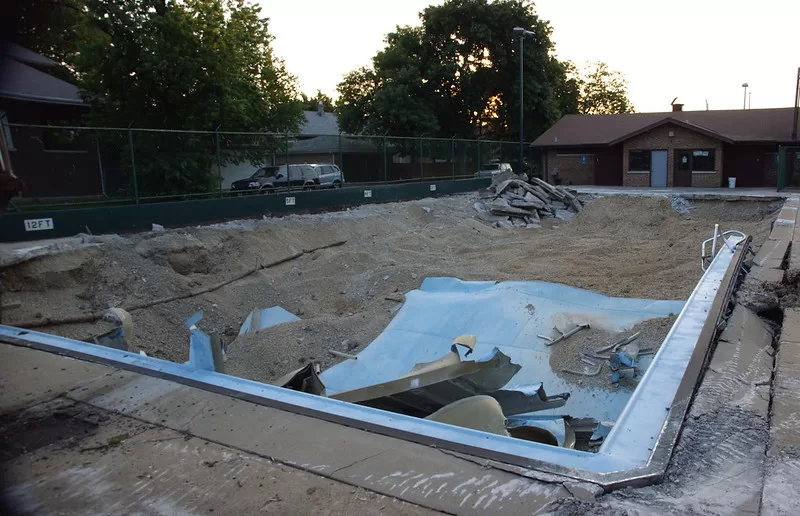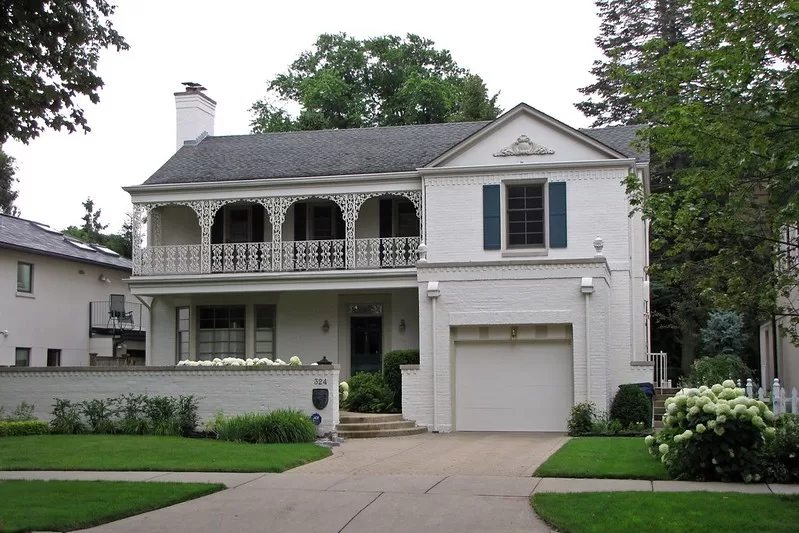Whether you are buying a home, building one, or planning on staying put in your current house, knowing a roof’s lifespan is always a good idea. According to Robert Major Construction Corp, the type of roof can have a considerable impact on its life expectancy, and some factors can influence its lifespan too.

Typically, you can expect your roofing system to last about 15 to 20 years. However, the actual lifespan of your roof depends significantly on the type of roofing material. So what are the different roof types, and how long do they last?
Roof Life Expectancy Based on Roofing Material
Your roof lifespan depends heavily on the material used, so let’s take a closer look at the different roof types and their life expectancy.
Asphalt Shingles
The most common roofing material in the United States is asphalt shingles, primarily due to its affordability, durability, and up to 25 years of warranties. Asphalt shingles are made of asphalt sealant and fiberglass, effectively protecting your roofing structure from rain, snow, winds, or severe UV rays.
However, while their average lifespan can vary based on the weather conditions and the climate of where you live, they will last between 15 to 25 years. More specifically, 3-tab shingles generally last between 15 to 20 years, architectural shingles last between 20 to 30 years, and premium ones last between 25 to 40 years.
If your asphalt shingle roofing starts reaching 15 to 20 years of age, it is best to consider a roof inspection and determine whether it needs to be replaced. Some signs indicating that you need a roof replacement include cracked shingles, curling, or mineral granules in your gutters.
Read Also:
Metal Roofing
Metal roofing has started to gain serious popularity in the United States, and there are many reasons why. For starters, a metal roof can last between 40 to 70 years, based on your chosen metal type. Premium metals such as zinc and copper can easily last over 100 years.
If installed properly, metal roofs can withstand winds up to 140 miles per hour. Moreover, they are impact-resistant and will not crack or corrode. Metal roofing will not spark or ignite into flames during lightning or wildfire.
Other benefits of metal roofs include energy efficiency, safety, and being environmentally friendly. Because metal roofs can reflect the infrared light rays and the sun’s UV that contribute to the roof’s surface radiant heat, this can result in a 10 to 25 percent reduction in cooling costs.
Some metal material choices include aluminum, zinc, copper, tin, and steel, but regardless of what roof material and style you choose, they all can be attractive options because of their minimal maintenance, longevity, and energy efficiency.
Wood Shakes and Shingles
Typically, wooden shingle roofs can last for 30 years, running up to 40. However, for wood roofs to last, you need to run regular maintenance, including yearly cleaning, repainting, or staining every five years.
On the other hand, the type of wood you choose can also determine the roof’s lifespan. For example, cedar shakes will last longer than any other type of wooden shingles due to their rot and insect-resistant. They can also withstand winds up to 245 mph, making them a popular choice for coastal homes.
Clay Tile Roofs
Roofs made out of clay are incredibly durable, lasting anywhere from 50 to 100 years, with manufacturers offering warranties from 30 years to a lifetime. Clay tile roofs’ life expectancy is so long because tiles are fire, weather, and rot-resistant.
Yet, to ensure that your clay roofing system lasts for as long as possible, cleaning it properly is vital. If it’s not cleaned on a regular basis, mold, moss, and algae might accumulate. Moss is known to be the most dangerous because it can penetrate the tiles and lead to roof leaks.
Signs that you may need a clay tile roof replacement include:
- Chipped or cracked tiles
- Roof leaks
- Water staining in the attic
- Pieces of tile in gutters
Slate Tile Roofs
The roofing material with one of the longest life expectancies is slate. Such roofs can last from 75 to 200 years, with manufacturers providing 50 years to a lifetime warranty. Slate excels in extreme weather conditions, such as changing temperatures or high winds. Because slate almost retains no moisture, it will not require much maintenance.
However, before installing a slate roof, you should consider it extremely heavy. For instance, 100 square feet of slate weigh about 1,000 pounds. So, make sure to have your roofing system inspected before to determine whether it can withstand such a weight.
What Factors Can Impact Your Roof’s Lifespan?
If you are looking for a new roof, there are some things you should consider to ensure you are making an intelligent investment. By following what factors impact the lifespan of roofing, you can get the best out of your new roof. Some factors include:
- Type of material: As mentioned, the materials you use and their durability represent prominent factors that can impact the average lifespan of your roof.
- Quality of materials: There are low- and high-quality versions of every roofing material. Low-quality material may lead to lower roofing life expectancy and more repairs.
- Underlayment: One of the most vital components of residential roof replacement is underlayment, which represents a layer of waterproofing protection in case the exterior roof gets damaged.
- The elements: Sun exposure, climate, winds, or temperature changes can cause cracks in shingles. Trees can also damage your roof, so check that the branches will not rub away at the shingles. Also, dispose of any debris or leaves built up in the gutters.
- Regular roof maintenance: Running periodic maintenance will extend the average lifespan of a roofing system. An annual roof inspection can help you identify any warning signs you may need a significant repair or replacement. Once an issue is identified, you can resolve it immediately before getting it out of hand.
Ultimately, choosing a licensed roofing contractor can influence the average lifespan of your roof more than you would think, so make sure to choose the proper roofing professional for the job.









